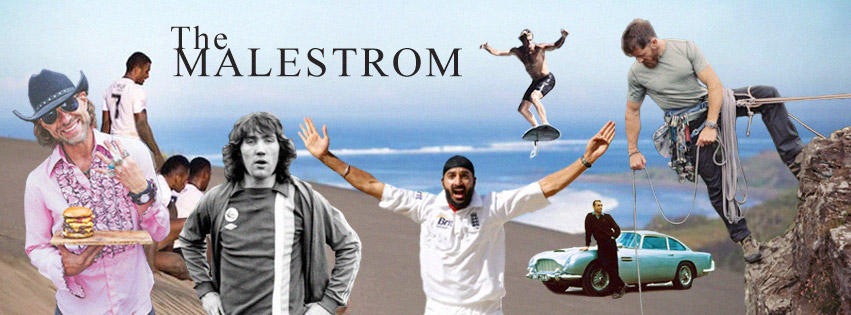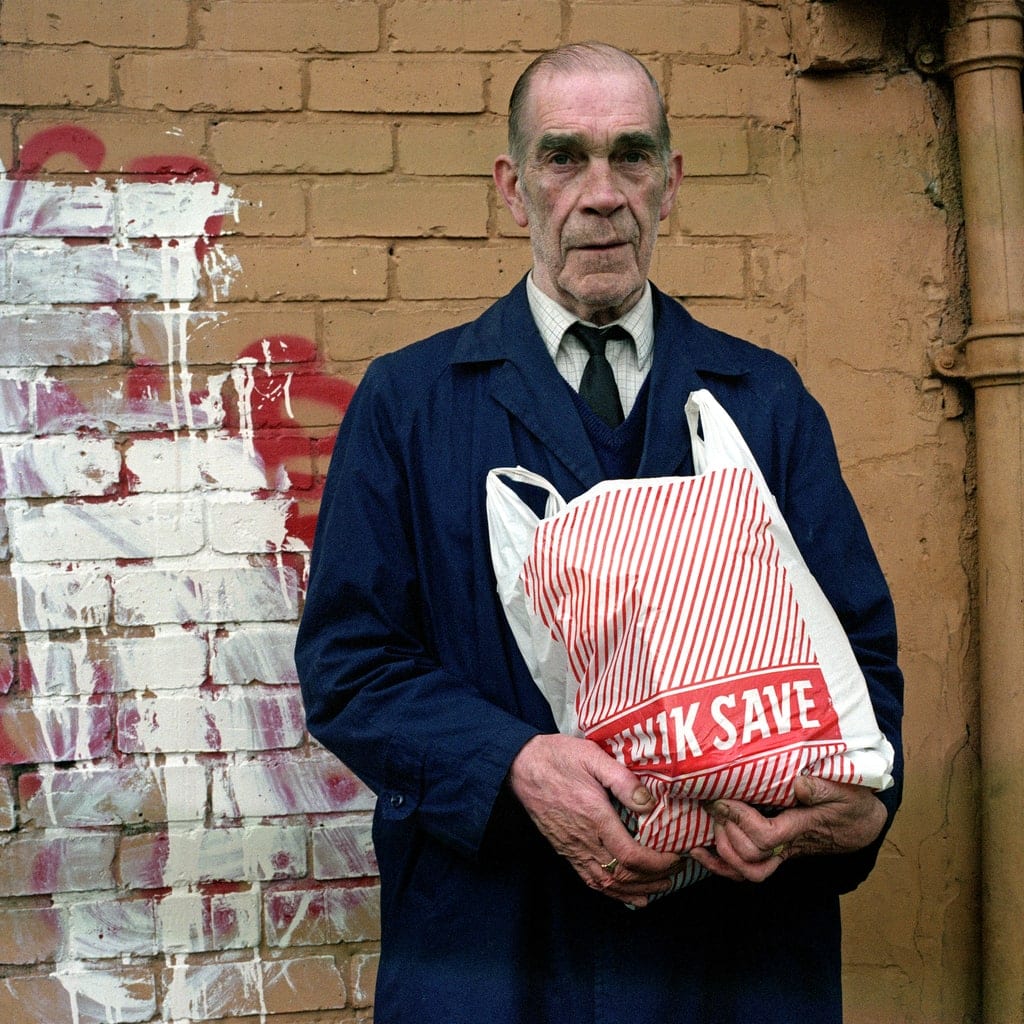
Born in Wick, a small working-class community in Northern Scotland, Rob Bremner got into photography after becoming sick of waking up early to work in a garage and sought a change of career that might offer him a lie in.
That decision pre-empted a lifelong obsession with documentary photography.
Having studied in Wallasey and Newport, learning his trade under some of the biggest names in British photography in Martin Parr and David Hurn, Rob wound up becoming a freelance snapper in Liverpool during the 80s, a tough time for the working-class city.
Here around areas like Everton, Vauxhall and the Pier Head, he captured some of his most striking images of proud, spirited, tight-knit communities.
He’s recently run a successful Kickstarter campaign in association with publishers Bluecoat Press to bring out a limited edition hardback, The Dash Between.
The title reflects a person’s life between birth and death – a short dash, and the book itself is a collection of images Rob took whilst on holidays with family, from his time living on Merseyside and whilst looking after his elderly father.
We sat down with Rob to talk about the new book, his life in photography and his memories of capturing Liverpool in the 80s.
The MALESTROM: Hey Rob, so where are you at with this wonderful new book? The pictures we’ve seen are amazing…
Rob Bremner: Thanks. I’m just waiting on a few things, the book will be out in January.
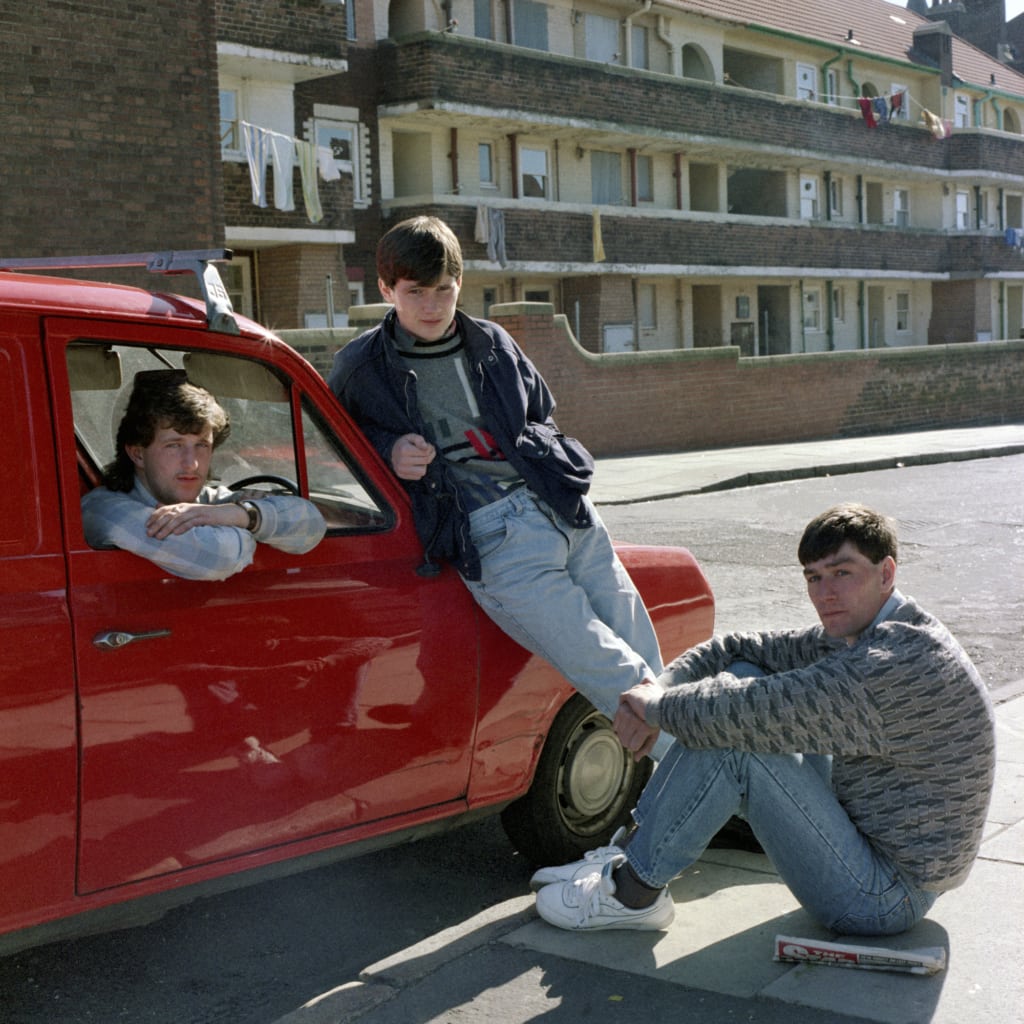
TM: Tell us how the idea for the book came about then?
RB: I basically had all these images, I hadn’t used any of them. One night I was online and a guy asked if I would post a few to a local Facebook page and it sort of went from there really. All the photos I took when I was a student over thirty years ago.
TM: How does it feel publishing these images all these years later?
RB: Well it was supposed to have been commissioned when I left college by Open Eye but it just fell through, they weren’t interested and it’s like lots of work I’ve shot before the invention of the internet, you never had an outlet, so you couldn’t meet other people.
You’d go and see Open Eye and they weren’t interested, so then you just go out trying to look for work, taking trips to London to see newspapers. Which I’m glad that I did now because I don’t think you can make much of a living as a documentary photographer and most people wind up teaching and I’ve ever really wanted to teach.
Whereas if you’re freelance you can always phone up a newspaper, well you used to be able to phone up with ideas and they would commission them. I’m quite fortunate in a way I think, because I was never financed to do these things, otherwise I would’ve got some Arts Council Grants in my twenties and then I probably wouldn’t have been a photographer.
There’s no way I could’ve financed that other than teaching. Most of the background of documentary photography in this country is academic.

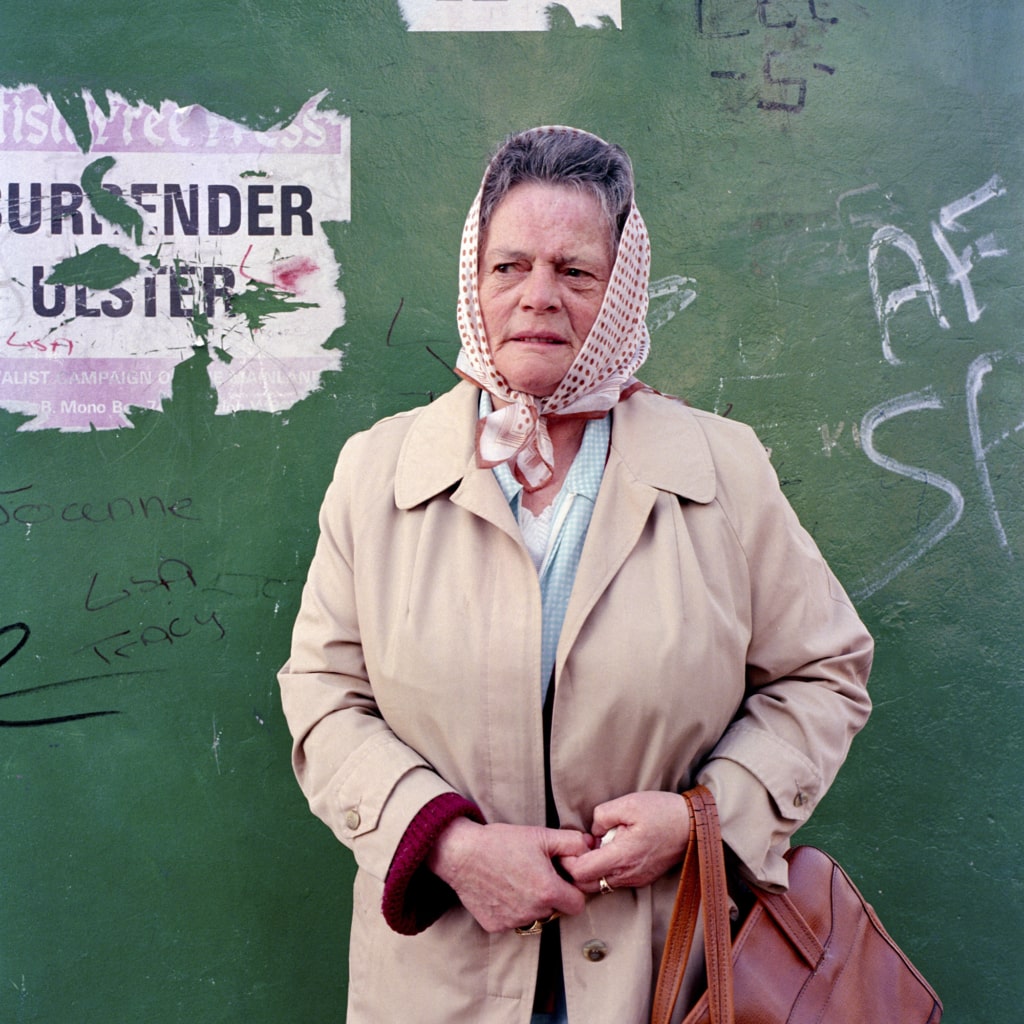
TM: What do you think you would have been if not a photographer?
RB: Well, I worked in a garage when I was sixteen but became a photographer when I got a YTS in Inverness as a press photographer. I’d gone and asked the local wedding photographer who got me that job, I’d been starting work at 7 in the morning and he didn’t start until 10 and that was the reason I wanted to be a photographer (laughs).
I just thought, yes, this is the life. I’d stumble out of bed at 9 in the morning show up to work and he wouldn’t start until 11 some mornings unless we had a job, and he made a good living out of it as well. I thought I’m sweating my guts out working in a garage from 7 in the morning til 6’clock at night. So that was the reason, it was down to sheer bloody laziness, it’s one of the reasons most people get into things like that and journalism.
TM: Tell us how the title of the book, The Dash Between, came about?
RB: It’s just life isn’t it. You know I was born in 1964 – died whenever, and that’s the dash between, it’s life, it’s just the dash between born and dying.

TM: They’re very striking portraits. What is it you’re looking for shooting? Something in particular?
RB: I don’t know, I never know what I’m looking for. I know how to take portraits in the sense that I’ll look for a background and people, but I’ll basically just ask people if I can take a photo of them. Obviously, you’re hanging around the same area, so you get to know people.
I did some black and white work before that in Everton so I was quite familiar with the area and people would invite me back for coffee or take me for a pint and stuff like that, it was a friendly area. So I was comfortable around there, but no all I’m doing is asking people and then it becomes a process of selection.


TM: So you’re still interacting with a lot of the people you took photos of?
RB: A lot of them are friends on Facebook, Sharon and Claire – they’re on the front page. The first guy that I photographed became a professional boxer, lots of people have got back in contact, which has been the highlight of my photographic career really. I’ve got all of these people that I know, lots of sharing memories.
Everton has changed so much, everything’s been pulled down, so it’s like a trip down memory lane and I don’t mind that, I’ve found it quite rewarding.
I mean Red Kate, you hear all the stories about Red Kate going from pub to pub and all the old blokes that I used to hang out with when I left college and didn’t have any money, you get all their relatives getting in touch.
I’ve posted in loads of sites and that’s the part of it that I really enjoy, Instagram and Facebook, talking to other photographers.
There’s a lot more freedom, not to be bothered about aesthetics continually, I really enjoy that part of it some days more than the ‘I’m a serious photographer’ type thing.

TM: Anything that stirs up positive memories is a good thing right?
RB: And it’s part of the history of the city as well because Scotland Road is the heart of Liverpool. Even from the early days from Liverpool as a port, that’s where everybody lived, that’s where the mixing pot was, the Irish, Scots, the Welsh.
TM: And the eighties was a tough time for most cities, not just Liverpool…
RB: When you’re living through things it doesn’t really bother you, you just take it day to day. If your factory had been closed, it was happening to all these working-class communities, it wasn’t having the kind of psychological effect others might think. These guys were used to showing up at dock gates or factories and being told there’s no work today.
That was one of the differences between Manchester and Liverpool, Manchester had regular work in factories, in Liverpool they had work when the boats came in, but it was more irregular.
I think they handled it well, I didn’t find the 80s to be that depressing, I was unemployed for a couple of years after leaving college, you just got by.
TM: Did it feel like an oppressive time, under Thatcher and all of that?
RB: No, not for me because that was my twenties. She came in when I was 16 for 12 years, but she was just there in the background. The people that came afterwards I think have actually got it worse.
I do think that this government is bad. I wouldn’t have made it to college now, I left school with no qualifications whatsoever, I wouldn’t make it to college now with all the fees and everything. I certainly wouldn’t have made it to England which was really important to me.
Going to Liverpool I bumped into Tom Wood, I worked in his darkroom, I lived in his house for ages, Martin Parr was around the corner and I wouldn’t have learnt what I learnt had I stayed in Scotland.
The guys up here just teach, what would I have learned, three years doing a fashion course in Edinburgh with no fashion industry. I was very fortunate the time I was born. With my background, I wouldn’t have made it now, I wouldn’t have gone to college at all. That door has long since closed.


TM: You mentioned Tom Wood and Martin Parr, being around them must have been a great learning curve for you?
RB: Well not really, because when you’re 19 you just take it for granted that Martin Parr lives around the corner and you just go round to Tom’s every time you’re hungry. I think I got a credit in his first book saying thanks for showing up when it was dinnertime.
He forgot to mention that I spent my entire time, printing everything up going through everything you know; I was doing that for years.
When I go and see him now down in Wales there’ll be a pile of prints, he does it to everyone (laughs), I only object when it’s landscapes, he’s been photographing hills around his house for about ten years now, panoramic… you’ll get to the six thousandth print and I can’t tell the difference between them anymore (laughs).
The thing about landscapes is they could be shot from any period in history, with documentary photography is that it’s a moment in time, once it’s passed it’s gone, fashions change, technology changes everything changes which makes it more interesting.

TM: How have you seen the world of photography change?
RB: Well, the thing was that when we left college most of us worked with newspapers, all you had to do back then was phone up the picture editor and go and see them, and they saw everyone. Now, I noticed a thing on the internet, they’re charging to actually look at portfolios. Come on!
And there’s a lot more exploitation, once people leave college – galleries charging for talks off photographers, charging for this, that and the other thing and you just think, this isn’t doing anybody any good, trying to get money off gullible people.
I noticed there’s an MA in Salford where it’s like ‘social photography’ they call it, and the entire thing seems to be how to fill in grants forms from the Arts Council so you can get money to photograph poor people, but, you’re obviously not poor because you’ve just done a three year degree and now you’re doing an MA for two years and you’re paying out thousands to go and photograph poor people!
Why not just go up to them in the street and say “excuse me Mr poor person can I take your photograph?” It’s just crazy.
We were quite fortunate because even if you weren’t that good all the trade unions had magazines if you went to see them you’d get paid NUJ rates. You were getting better paid than if you were working for the Guardian or anything.
There were loads of different supplements you could work for. I was really grateful.

TM: You mentioned before about being spoilt with your tutors, you were also taught by David Hurn at Newport? Did you appreciate that?
RB: In the second year David Hurn bumped into me in the corridor, there were only 20 of us on the course at any given time, he asked me who I was, he couldn’t remember, I was glad he didn’t.
The first year we had a class, I went out and photographed a religious meeting or something, I was just bored shitless. What I took was absolute shite, I really thought I was going to be put on probation.
I just thought, no David, I’m going to avoid you in case I have another off day and you kick me off the course. So I never really had that much to do with him, but he was really intelligent, it was a really well thought out course.
We were spoiled as all the lecturers had to hang around for twelve hours a day in case we decided to come in. We were very well taught. I think what we learned there was how to communicate, cause we had to go out every day and meet all kinds of people from different backgrounds.
I remember having a really nice day out with the local vet once going round all the farms, there was just so much of that.
One day I travelled with a peace convoy, we were always encouraged to be out doing unusual things. I remember photographing the gravestone maker, he posed a three picture story for me, he knew exactly what to do cause that town had been photographed so often.
By the time I was there between 85-87, the course had already been going for fifteen years, so everyone had been photographed, tattooists, heroin addicts, you name them, they’d all been done.
We started to go further afield, to Bristol or Cardiff, anywhere to find something new to photograph. But it was a good experience.
So I think I was spoiled the whole way along, but I just took it all for granted, as you do.
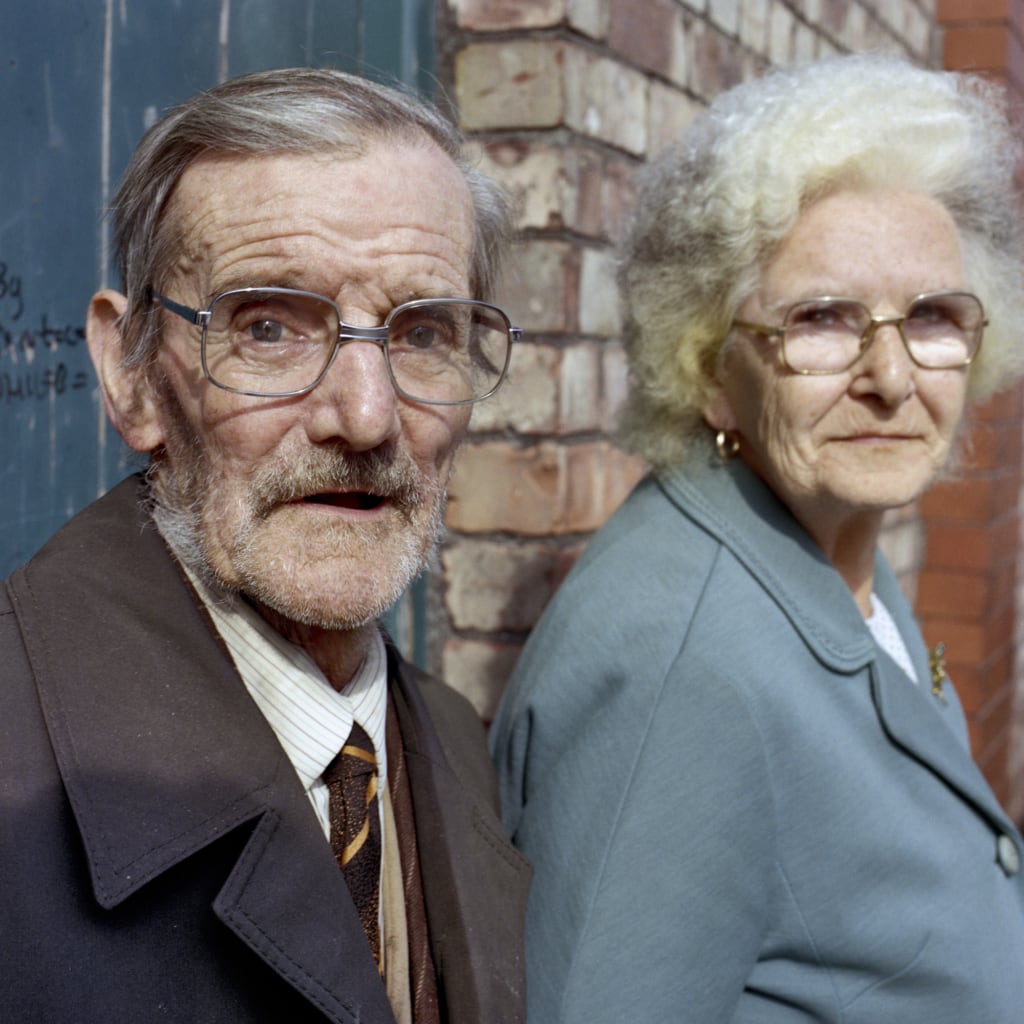
TM: Who’s work did you look at on your way that you drew inspiration from?
RB: Obviously Tom, and with hanging around him I had access to all his books. So it’d be Tom, Gary Winogrand, Lee Friedlander, Diane Arbus to a certain extent. It was that entire history of photography.
I spent all my time reading all the books, just about everything on photography I could find.
So August Saunder, all of the great photographers I was really familiar with. Probably more than anyone I liked Lee Friedlander, he was actually clever the way he used photography.
And I liked Winogrand’s idea that he takes photographs to see what they look like, he never confused the photograph with reality, cause they shouldn’t be confused with reality, they don’t replace or really accurately explain a lot of the time. They are kind of documents, but they are limited as any medium is, it’s no replacement for life.
TM: Some of the photographs in your book are very of a time, the clothing, the colours, just the KwikSave carrier bags brought lots of memories back for us…
RB: Sure, but then if you are doing documentary filming you are looking to a certain extent for the everyday, but even then your aware that it’s going to change. I have a neighbour Sandy who died, he was 97, he was saying to me you’ve seen more change than I have.
He remembered the First World War and his brother going away, but their lives never changed, he remembered the first telephone in the village, but other than that nothing up here really changed until the 60s.
In the same way even in Liverpool with the factories and that, it was only with television and The Beatles things started to change then. I’m sure factory life has been pretty much the same for a hundred years. It’s within our own lifetime that things are changing so rapidly.

TM: What’s your favourite image from the book?
RB: Probably the one on the front cover (pictured above). Just the graffiti and the way Sharon and Claire are so trendily dressed for the time. It sums up something about Liverpool, they are really stylish. It’s the fashion thing as well because it’s just so 1980s. Yeah, I like that, but I do really like a few of them.
I prefer in a way 35mm candid work to portraits because portraits are quite easy to do. Saying that if you put a portrait on Facebook, as opposed to a candid photo a portrait will always get more likes.
Not that you should be viewing photography in terms of how many likes it gets. It’s just people prefer that overall.

TM: Can you give us some final words on your photography?
RB: It’s just something I’m used to doing. Some people sit and think about it but I never do, I just take photographs when I feel like it. It’s a reaction to the life around you, it’s not premeditated most of the time.
Rob’s book The Dash Between will be out in January. Check back here for information on where to buy a copy.

To see more of his fantastic images follow Rob on Instagram.
Click the banner to share on Facebook
